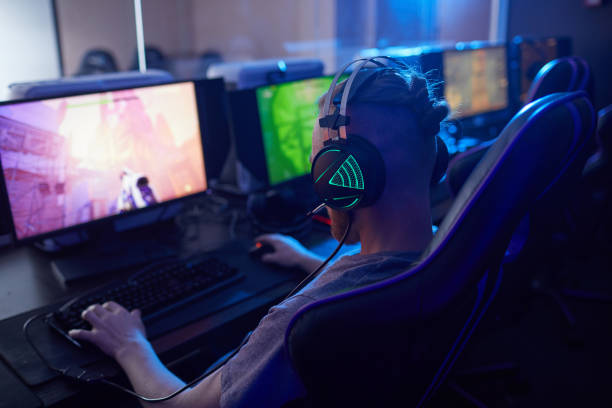Gaming Setups: See What’s Available and Learn What to Expect
Choosing the right gaming PC can transform your gaming experience, but with countless options available, the decision-making process can feel overwhelming. Whether you're a casual gamer looking for smooth 1080p performance or an enthusiast seeking 4K gaming excellence, understanding your options is crucial for making an informed purchase that matches your gaming needs and budget.

Build Your Own or Buy Pre-Built – What Are the Options?
The fundamental choice every gamer faces is whether to build a custom gaming PC or purchase a pre-built system. Building your own PC offers complete control over component selection, potentially better value for money, and valuable learning experience about computer hardware. You can prioritize specific components based on your gaming preferences and upgrade individual parts as needed.
Pre-built gaming PCs provide convenience, warranty coverage, and professional assembly. Major manufacturers like Dell, HP, ASUS, and specialized gaming companies offer systems tested for compatibility and performance. While pre-built systems may cost slightly more than DIY builds, they eliminate compatibility concerns and technical assembly challenges that some users prefer to avoid.
Gaming PCs with Varying Performance Levels
Gaming PCs span a wide performance spectrum, from budget-friendly systems handling esports titles to powerhouse machines delivering ultra-high settings in demanding AAA games. Entry-level gaming PCs typically feature integrated graphics or budget discrete GPUs, suitable for popular games like Fortnite, League of Legends, and older AAA titles at moderate settings.
Mid-range gaming systems incorporate dedicated graphics cards capable of 1080p gaming at high settings across most modern titles. These systems balance performance and cost, offering excellent gaming experiences without premium pricing. High-end gaming PCs feature flagship graphics cards, high-refresh displays, and premium components designed for maximum performance in current and upcoming games.
Entry-Level vs High-Performance: Which Setup Fits You?
Entry-level gaming setups serve casual gamers, students, and those with limited budgets who primarily play less demanding games. These systems typically include processors like AMD Ryzen 5 or Intel Core i5, 8-16GB RAM, and graphics cards such as NVIDIA GTX 1660 or AMD RX 6500 XT. They handle 1080p gaming comfortably in most titles with medium to high settings.
High-performance gaming setups target enthusiasts seeking maximum visual fidelity, high refresh rates, and future-proofing. These systems feature flagship processors like AMD Ryzen 9 or Intel Core i9, 32GB or more RAM, and premium graphics cards such as NVIDIA RTX 4080/4090 or AMD RX 7900 XTX. They excel at 1440p and 4K gaming with ray tracing enabled and support VR gaming seamlessly.
Gaming Specs Explained: What Really Matters
Understanding key gaming specifications helps identify systems matching your needs. The graphics card (GPU) most significantly impacts gaming performance, determining frame rates and visual quality settings. Modern games benefit from GPUs with at least 8GB VRAM for high-resolution textures and future compatibility.
Processor (CPU) performance affects overall system responsiveness and games utilizing multiple cores. Most current games perform well with 6-8 core processors, though some benefit from higher core counts. RAM capacity should be at least 16GB for modern gaming, with 32GB providing headroom for multitasking and memory-intensive games. Storage type matters significantly – solid-state drives (SSDs) dramatically reduce loading times compared to traditional hard drives.
Finding a Gaming PC That Matches Your Style of Play
Different gaming styles require different system priorities. Competitive esports players prioritize high refresh rates and consistent frame rates over maximum visual settings, favoring systems with strong CPUs and mid-range GPUs paired with 144Hz or 240Hz monitors. These setups ensure responsive gameplay and competitive advantages in fast-paced games.
Single-player and story-driven game enthusiasts often prefer systems optimized for visual quality, featuring high-end graphics cards capable of ray tracing and 4K resolution. Content creators who stream or record gameplay need systems with powerful CPUs for encoding, additional RAM for multitasking, and robust cooling solutions for sustained performance.
Real-World Gaming PC Pricing and Options
Gaming PC costs vary significantly based on performance targets and component selection. Understanding typical pricing helps set realistic expectations for different performance tiers and budget planning.
| Performance Tier | Price Range | Key Components | Gaming Capability |
|---|---|---|---|
| Entry-Level | $500-$800 | Ryzen 5/Core i5, GTX 1660/RX 6500 XT, 16GB RAM | 1080p Medium-High Settings |
| Mid-Range | $800-$1,500 | Ryzen 5/Core i7, RTX 4060/RX 7600 XT, 16-32GB RAM | 1080p-1440p High Settings |
| High-End | $1,500-$3,000 | Ryzen 7/Core i7, RTX 4070-4080/RX 7800 XT, 32GB RAM | 1440p-4K Ultra Settings |
| Enthusiast | $3,000+ | Ryzen 9/Core i9, RTX 4090/RX 7900 XTX, 32GB+ RAM | 4K Ultra + Ray Tracing |
Prices, rates, or cost estimates mentioned in this article are based on the latest available information but may change over time. Independent research is advised before making financial decisions.
Gaming PC selection ultimately depends on balancing performance requirements with budget constraints. Entry-level systems provide excellent value for casual gaming, while high-end systems offer premium experiences for demanding users. Consider your most-played games, display resolution, and desired settings when choosing between performance tiers. Remember that gaming PCs can be upgraded over time, allowing gradual improvements as budgets and requirements change.




